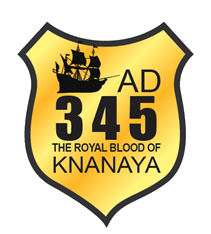



It is not clear how the division of the Saint Thomas Christians into Southern and Northern groups originated. The earliest extensive written evidence for the split dates to the 16th century.[11] The St. Thomas Christian tradition defines the division as being both geographical and ethnic, expressing that the Native St. Thomas Christians initially resided on the north side of the Chera Empire’s capitol city of Cranganore while the Middle Eastern migrant Knanaya arrived and settled on the south side, which subsequently led to the designation Northist and Southist.[12] Directional divisions within communities are common in Kerala, including among Hindu groups.[13][14] A similar north-south division is found among the Nairs, and it historically appears to have been in place in the early Brahmin settlements in the area. The Saint Thomas Christians may have taken this trait from the Brahmins.[15]
A number of traditions and stories have emerged to explain the division,[16] and both Southists and Northists use variants of these traditions to claim superiority for their group.[17] The earlier version traces the divide to the figure of Thomas of Cana, a Syrian merchant who led a group of 72 Jewish-Christian immigrant families, a bishop named Uraha Mar Yausef, and clergymen from the Middle East to settle in Cranganore, India in the 4th century (some sources place these events in the 8th century).[17][18][19] This story may reflect a historical migration of East Syrian Christians to India around this time, which established the region's relationship with the Church of the East.[20] In the Knanaya versions of this story, the Knanaya are the descendants of Thomas of Cana and his followers, while the Northists descend from the local Christian body which had been converted by Thomas the Apostle centuries earlier.[21][22] Elements of the Thomas of Cana story feature in ancient songs as well as the Thomas of Cana copper plates awarded to Thomas of Cana followers by a local ruler.[23][19][24] These plates are said to have granted Thomas’ followers 72 social, economic, and religious rights from Cheraman Perumal, the Chera king.[25] The plates were present in Kerala during the time of the Portuguese colonization in the early 17th century, but were lost during Portuguese rule.[26] The Knanaya invoke the plates as evidence of their descent from Thomas of Cana's mission.[27] This version of the Thomas of Cana narrative is the accepted history among both Knanaya and Northist scholars alike as well as scholarship in general.[12][28]


